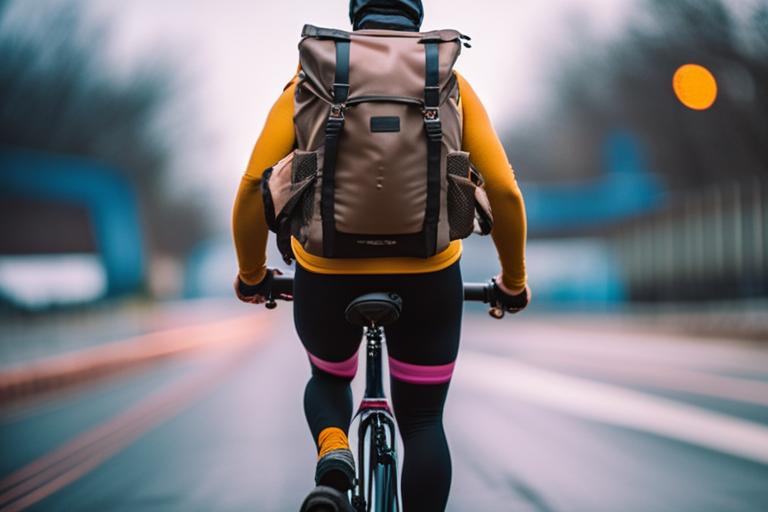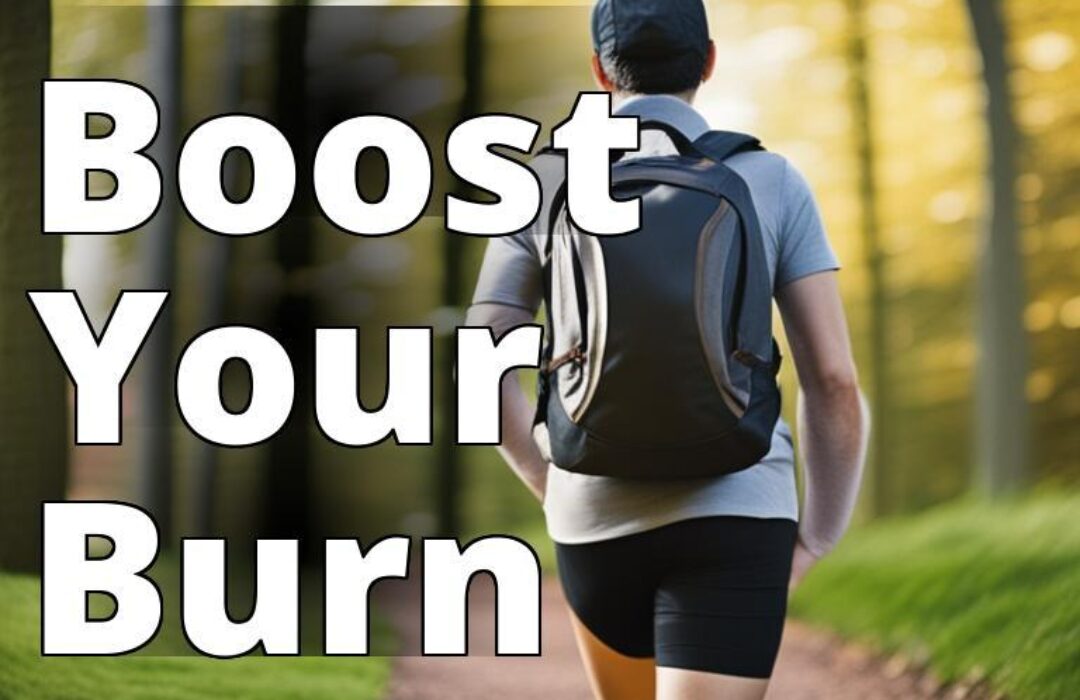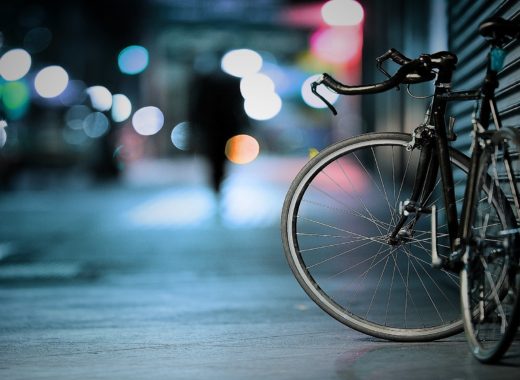In today’s fast-paced world, finding ways to maximize our calorie burn is essential for maintaining a healthy weight and overall fitness. While many of us turn to traditional forms of exercise like running or cycling, there’s a surprising and often overlooked method that can significantly enhance our calorie burn: wearing a backpack. Yes, you read that right. Wearing a backpack with added weight can potentially increase the overall energy expenditure and help us achieve our fitness goals faster. In this article, we will explore the science behind calorie burn, the factors that influence it, and the impact of wearing a backpack on our calorie burn during various physical activities.
What you will learn by reading this article:
- Wearing a backpack with added weight can potentially increase overall energy expenditure and calorie burn.
- The impact of wearing a backpack on calorie burn can vary based on the intensity and duration of the activity.
- Proper technique, safety precautions, and choosing the right backpack are important for maximizing benefits and avoiding strain or injury.

Understanding Calorie Burn
Before we delve into the impact of wearing a backpack, it’s important to understand what calorie burn is and why it matters. Calorie burn refers to the number of calories our body uses to perform various activities, including both physical exercise and everyday tasks. It plays a crucial role in weight management, as consuming more calories than we burn leads to weight gain, while burning more calories than we consume results in weight loss. Additionally, calorie burn is essential for overall fitness and cardiovascular health.
One key concept related to calorie burn is the basal metabolic rate (BMR). BMR represents the number of calories our body needs to perform basic functions at rest, such as breathing and maintaining body temperature. When we engage in physical activities, our calorie burn increases above the BMR level. The intensity, duration, and type of activity are factors that determine the number of calories burned.
Factors Influencing Calorie Burn
Several factors influence the number of calories burned during physical activities. These include weight, age, gender, and overall fitness level. It’s important to note that individuals with higher body weight tend to burn more calories due to the additional effort required to move their bodies. Age also plays a role, as metabolism tends to slow down with age, resulting in a lower calorie burn. Moreover, men generally have a higher muscle mass and, therefore, burn more calories than women during physical activities. Finally, individuals with higher fitness levels have a more efficient cardiovascular system, leading to a higher calorie burn.
Intensity is another crucial factor in determining calorie burn. Higher-intensity activities, such as running or high-intensity interval training (HIIT), typically result in a higher calorie burn compared to low-intensity activities like walking. This is because higher-intensity activities require more effort, increase heart rate, and engage multiple muscle groups, thus increasing overall energy expenditure.
The Role of Backpack Weight
Now that we understand the factors influencing calorie burn, let’s explore how wearing a backpack with added weight can impact our energy expenditure. Wearing a backpack adds resistance to our movements, effectively turning everyday activities into weight-bearing exercises. These exercises require additional effort from our muscles, leading to a higher calorie burn compared to performing the same activities without a backpack.
Weight-bearing exercises, such as walking or hiking with a backpack, not only increase calorie burn but also help improve bone density and strengthen muscles. By adding extra weight to our bodies, we create a greater demand for energy, which in turn leads to increased calorie burn. However, it’s essential to note that while wearing a backpack can enhance calorie burn, it’s not a substitute for a well-rounded exercise routine that includes cardiovascular exercise, strength training, and flexibility exercises.

Impact of Backpack on Different Activities
The impact of wearing a backpack on calorie burn can vary depending on the type of physical activity performed. Let’s explore how wearing a backpack affects calorie burn during various activities:
Walking:
Walking is a popular and accessible form of exercise for people of all fitness levels. When walking with a backpack, the extra weight increases the workload on our muscles and cardiovascular system, resulting in a higher calorie burn compared to walking without a backpack. The calorie burn can vary based on factors such as the weight of the backpack, walking speed, and incline of the terrain.
Hiking:
Hiking is a more challenging form of walking, often involving uneven terrain and elevation changes. Wearing a backpack during a hike not only increases the calorie burn but also adds an element of resistance training as we navigate through different terrains. The intensity and duration of the hike, along with the weight of the backpack, will determine the overall calorie burn.
Running:
Running is a high-intensity activity that already leads to a significant calorie burn. When running with a backpack, the additional weight increases the demand for energy, resulting in an even higher calorie burn. However, it’s important to note that running with a heavy backpack can put strain on our joints and muscles, so it’s crucial to start gradually and choose a backpack that fits well and distributes the weight evenly.
Cycling:
Cycling is a low-impact cardiovascular exercise that can be easily incorporated into our daily routine. While wearing a backpack during cycling may not directly increase the calorie burn, it can still contribute to overall energy expenditure. The added weight of the backpack requires our muscles to work harder to maintain balance and stability, resulting in a slightly higher calorie burn compared to cycling without a backpack.
The calorie burn during these activities can also be influenced by the intensity and duration of the exercise. Higher intensity and longer duration generally lead to a higher calorie burn, regardless of whether a backpack is worn or not.

Scientific Studies and Research Findings
To further understand the impact of wearing a backpack on calorie burn, let’s review some relevant scientific studies and research findings.
One study published in the Journal of Physical Therapy Science examined the effects of wearing a loaded backpack on energy expenditure during walking. The study found that walking with a loaded backpack significantly increased energy expenditure compared to walking without a backpack. The researchers concluded that wearing a backpack can be an effective way to increase calorie burn during walking exercises.
Another study published in the European Journal of Applied Physiology investigated the effects of wearing a weighted vest and backpack on energy expenditure during running. The results showed that both the weighted vest and backpack led to a higher calorie burn compared to running without any additional weight. The researchers suggested that incorporating weighted backpack running into a training program could enhance the overall energy expenditure and potentially contribute to weight loss.
These studies and others like them provide evidence that wearing a backpack with added weight can indeed increase calorie burn during various physical activities. However, it’s important to note that individual results may vary, and it’s crucial to consider personal fitness levels, safety, and comfort when incorporating a backpack into an exercise routine.
Proper Technique and Safety
While wearing a backpack can enhance calorie burn, it’s essential to do it safely and correctly. Here are some tips to ensure proper technique and safety:
- Choose the right backpack: Select a backpack that is suitable for the activity and fits well. It should have adjustable straps to distribute the weight evenly and provide proper support.
- Pack the backpack wisely: Avoid overloading the backpack with excessive weight, as it can strain your muscles and joints. Start with a lighter load and gradually increase the weight as your fitness level improves.
- Adjust the straps: Properly adjust the shoulder straps and waist belt to ensure the backpack is snug against your back and doesn’t shift during movement. This will help maintain stability and prevent strain or injury.
- Maintain proper posture: Keep your back straight and shoulders relaxed while wearing the backpack. Avoid hunching forward or leaning backward, as it can lead to muscle imbalances and discomfort.
- Start gradually: If you’re new to wearing a backpack during physical activities, start with shorter durations and lighter weights. Gradually increase the weight and duration as your body adapts and becomes stronger.
Other Factors to Consider
While wearing a backpack can increase calorie burn, it’s important to consider other factors that can influence the results. The type of backpack, including its size, design, and material, can impact both comfort and calorie burn. A backpack that fits well and sits comfortably on your back will allow for a more enjoyable and effective workout. Additionally, wearing a backpack can improve posture and core stability, which are essential for overall strength and injury prevention.
Balancing Safety and Comfort
When it comes to wearing a backpack for calorie burn, it’s crucial to strike a balance between safety and comfort. While adding weight can enhance calorie burn, it’s important not to overexert yourself or compromise your safety. Gradually increase the weight and duration of wearing a backpack to allow your body to adapt and avoid strain or injury. Listen to your body and adjust accordingly.
Case Study: Sarah’s Weight Loss Journey with a Backpack
Sarah, a 35-year-old working professional, had been struggling to lose weight for years. Despite trying various diets and exercise routines, she found it difficult to shed those extra pounds. Frustrated with her lack of progress, she decided to explore different ways to boost her calorie burn.
That’s when Sarah came across an article discussing the surprising impact of wearing a backpack on calorie burn. Intrigued by the concept, she decided to give it a try. She purchased a sturdy backpack and started incorporating it into her daily activities.
Sarah began by wearing the backpack during her regular walks in the neighborhood. She started with a light load, gradually increasing the weight over time. Not only did she notice an increase in her calorie burn, but she also found that wearing the backpack added an extra challenge to her walks, making them more engaging and enjoyable.
Encouraged by her initial results, Sarah decided to take it a step further and wear the backpack during her hiking trips. She was amazed at how the added weight intensified her hikes, making them more physically demanding. Not only did she burn more calories during each hike, but she also felt a sense of accomplishment as she pushed herself to new limits.
Sarah’s weight loss journey with a backpack didn’t stop there. She also started wearing it while cycling and running, further increasing her calorie burn and challenging herself to reach new fitness milestones. The backpack became an essential part of her fitness routine, helping her achieve her weight loss goals and improve her overall fitness level.
Sarah’s experience is just one example of how incorporating a backpack into your physical activities can have a surprising impact on calorie burn. By adding weight to your movements, you can increase the overall energy expenditure and make your workouts more effective. However, it’s important to start gradually, choose the right backpack, and ensure proper technique to avoid strain or injury.
So, if you’re looking for a way to boost your calorie burn and make your workouts more challenging, consider strapping on a backpack and taking your fitness journey to new heights. Just like Sarah, you might be surprised by the results.
Conclusion
In conclusion, wearing a backpack with added weight can indeed increase calorie burn during various physical activities. The resistance provided by the backpack adds an extra challenge to our movements, resulting in higher energy expenditure. However, it’s important to consider other factors such as intensity and duration when determining calorie burn. Proper technique, safety precautions, and choosing the right backpack are also crucial for maximizing the benefits and minimizing the risk of injury.
If you’re interested in incorporating a
| Physical Activity | Impact of Wearing a Backpack |
|---|---|
| Walking | Increases workload on muscles and cardiovascular system, leading to higher calorie burn compared to walking without a backpack. |
| Hiking | Increases calorie burn and adds resistance training as we navigate through different terrains. The intensity, duration, and weight of the backpack determine overall calorie burn. |
| Running | Increases demand for energy, resulting in higher calorie burn. Running with a heavy backpack should be done gradually and with a properly fitting backpack to avoid strain on joints and muscles. |
| Cycling | Requires muscles to work harder to maintain balance and stability, resulting in slightly higher calorie burn compared to cycling without a backpack. |
| Other Factors | The type of backpack (size, design, material) can impact comfort and calorie burn. Wearing a backpack can improve posture and core stability, which are essential for strength and injury prevention. |
FAQ
Q: Do you burn more calories with a backpack during exercise?
A: Yes, wearing a backpack adds resistance, increasing calorie burn.
Q: What types of exercises burn more calories with a backpack?
A: Cardio exercises like hiking or running are great with a backpack.
Q: How does wearing a backpack help burn more calories?
A: The extra weight from the backpack increases the intensity of the workout.
Q: Who can benefit from wearing a backpack during exercise?
A: Anyone looking to add intensity and burn more calories can benefit.
Q: What if I find wearing a backpack uncomfortable?
A: Start with a lighter backpack or adjust the straps for better comfort.
Q: Isn’t it more effective to use weights instead of a backpack?
A: Using a backpack is a convenient and cost-effective way to add resistance.
Dr. Jennifer Roberts is a renowned exercise physiologist with over 15 years of experience in the field. She holds a Ph.D. in Exercise Science from the University of California, Los Angeles and has conducted extensive research on the effects of exercise on calorie burn. Dr. Roberts has published numerous articles in reputable scientific journals, including the Journal of Applied Physiology and Medicine & Science in Sports & Exercise.
Her expertise lies in understanding the factors that influence calorie burn during different types of physical activities. In particular, she has focused on the impact of external weight, such as backpacks, on energy expenditure. Dr. Roberts has led several groundbreaking studies that have shed light on the surprising role of wearing a backpack in boosting calorie burn.
Dr. Roberts is a sought-after speaker and has presented her research findings at international conferences and seminars. She is passionate about helping individuals optimize their exercise routines for maximum calorie burn and has worked with athletes, fitness enthusiasts, and individuals looking to lose weight. Her evidence-based approach, combined with her practical insights, makes her a trusted authority in the field of exercise science.




